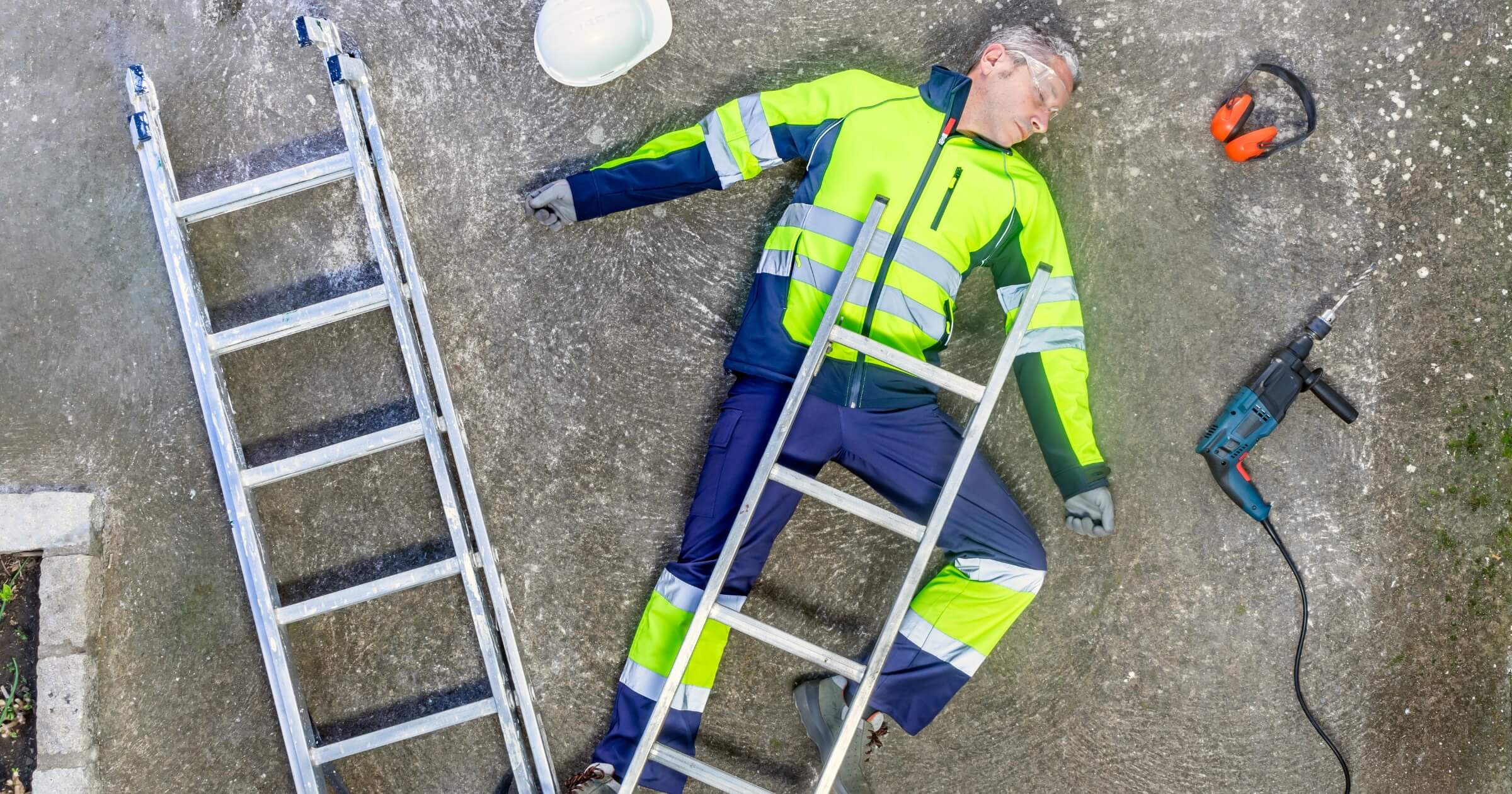Halloween isn’t the only time people should be scared. Across the U.S., construction workers face real dangers every day when safety rules are ignored. These true stories of horrifying safety accidents show how quickly ordinary tasks can turn tragic and why paying attention to safety can mean the difference between life and death.
Quick look
- Eight real construction tragedies reveal how everyday tasks can turn deadly when safety procedures are ignored.
- Common causes include falls, struck-by and crush incidents, electrocution, and confined-space hazards.
- Stronger communication, planning, and enforcement of safety rules could have prevented every case.
- Building a culture where workers speak up and follow proper training is the best defense against job site “monsters.”
Story 1: The killer tape measure (New Jersey, 2014)
In November 2014, a 58-year-old construction worker lost his life on a Jersey City high-rise project when a one-pound tape measure fell nearly 50 stories. It came loose from another worker’s belt, hit a piece of equipment on the way down, and struck the man on the head as he walked through the area. News outlets at the time reported that he wasn’t wearing a hard hat.
What makes this story so chilling is how something as ordinary as a tape measure became a deadly projectile. Investigators later found that no tool tethering systems or protective covers were in place to prevent falling objects, which remain among the top workplace safety hazards.
The tragedy was a grim reminder that even small tools can be deadly when dropped from a great height. Simple safety steps, such as securing gear, wearing proper PPE, and keeping exclusion zones clear, could have saved a life that day.
Story 2: Crane from the sky (Washington, 2019)
On April 27, 2019, a tower crane being dismantled above Mercer Street in Seattle collapsed onto the roadway, killing four people, including two ironworkers on the crane and two bystanders in passing cars. The crane was part of a Google office project in the South Lake Union neighborhood and came down during disassembly.
A six-month-long investigation revealed that critical pins and sleeves were removed too soon, leaving the structure unstable in gusty wind conditions. The investigation also found that the companies involved failed to follow the manufacturer’s dismantling instructions and did not plan adequately for wind.
What makes this tragedy so haunting is how an ordinary part of the skyline suddenly became a deadly threat. Proper safety planning and a thorough job hazard analysis could have identified those risks before work began, preventing one of Seattle’s deadliest construction accidents in years.
Story 3: Ignored warnings of steel erector (Arcadia, Florida, 2023-24)
In late 2023, a 31-year-old steel erector died after falling about 12 feet onto a concrete slab while walking across steel purlins at a job site in Arcadia, Florida. According to OSHA, the worker had disconnected his lifeline just before the fall, leaving him unprotected from the hazard.
What makes this case especially tragic is that it was not the company’s first offense. The employer, Landmark Erecting Inc., had been cited before for similar fall protection violations and was issued a repeat violation following this fatality.
The lesson here is simple but serious. Workers must be able to speak up about unsafe practices before someone gets hurt. Building psychological safety in construction encourages crews to raise concerns and stop work if conditions are risky. Fall protection saves lives only when it is consistently enforced and backed by a culture that values safety over speed.
Story 4: Asphyxiated underground (Arkansas, 2022)
On June 14, 2022, two workers died after entering a sewer manhole at a worksite in Edmond, Oklahoma. The contractor was Arkansas-based Belt Construction Inc. The men were part of a crew performing sewer maintenance when one worker went down and became unresponsive. A second worker tried to rescue him but also succumbed to the oxygen-deficient atmosphere before help arrived.
The scariest part of this tragedy is that the danger could not be seen or smelled. Oxygen deprivation is a silent killer that can overwhelm workers in seconds. Investigators found that the company had not conducted atmospheric testing or obtained the required confined space entry permit, both of which are basic steps to prevent such incidents.
Confined space hazards are among the most overlooked risks in construction and heavy equipment operations. Simple precautions like air monitoring, ventilation, and a rescue plan can save lives. Training and proper heavy machinery safety awareness can also help crews identify an unsafe space.
Story 5: Ironworker falls nine stories (Chicago, IL, 2024)
On June 6, 2024, a construction worker was killed and another critically injured after falling nine stories from scaffolding at the University of Chicago Medicine’s new cancer research center. The incident happened during high winds as crews worked on the upper floors of the structure.
Witnesses claimed that the scaffolding began to sway before the collapse, sending two workers to the ground below. One worker died at the scene, while the other was taken to the hospital in critical condition.
Investigators discovered that no fall protection was in place, and the crew continued working even as the wind grew stronger. The collapse showed how strengthening safety communication on the job site can make the difference between a close call and a tragedy.
Story 6: Electrocution death during chiller work (Kansas City, MO, 2022)
In August 2022, a 23-year-old HVAC apprentice was killed while servicing rooftop equipment at University Academy, a charter school in Kansas City, Missouri. The crew had been clearing debris when he touched an energized part of the system. Paramedics arrived within minutes, but he could not be revived.
The shock came from an energized circuit that should have been shut off before maintenance began. OSHA’s investigation revealed that the employer, U.S. Engineering Services, had a prior record of electrical safety violations and failed to follow lockout/tagout procedures.
This tragedy shows how a single oversight can have fatal consequences. De-energizing equipment, verifying zero energy, and using proper signage are essential steps before starting electrical work. Understanding electrical hazards on the job helps workers in every trade recognize and avoid risks that can turn routine maintenance into a deadly mistake.
Story 7: Loader crushes worker below bucket (Northeast U.S., 2024)
In January 2024, a construction worker died after being pinned under the raised bucket of a front-end loader while it was moving stone on uneven ground at a site in the northeastern United States. OSHA records show the bucket dropped unexpectedly, trapping the worker before anyone could react.
The event happened almost instantly. The operator lost sight of the ground crew and didn’t realize someone was standing too close to the machine. There were no barriers or spotters in place to keep the area clear, and the miscommunication proved fatal.
Crush injuries like this remain one of the leading causes of death around heavy equipment. Simple steps, such as maintaining clear sight lines, using trained spotters, and keeping safe distances, can prevent these kinds of accidents. Following basic heavy machinery safety practices helps protect both operators and ground workers from situations that turn deadly in seconds.
Story 8: The porta-potty death trap (Florida, 2022)
On March 4, 2022, a construction worker died at the North Central Landfill in Bartow, Florida, when a bulldozer rolled over a portable toilet with him inside. The operator was clearing debris near the rest area and didn’t notice that the unit was occupied. The man was pronounced dead at the scene.
Investigators determined that the operator had a limited line of sight and no spotter to guide equipment movement near the portable restroom. The machine was backing up in a blind zone when the fatal collision occurred.
This tragedy demonstrates the importance of situational awareness and communication around heavy machinery. Clear work zones, visible markings, and trained spotters can prevent incidents like this one. Many of these issues fall under the top workplace safety hazards, which include struck-by accidents and poor visibility. Something as ordinary as taking a short break should never end in such a devastating loss.
Halloween may be about spooky fun, but for construction workers, the fear is real. Sometimes, the scariest things on a job site are the bad habits that creep in when people cut corners, rush through checks, or think accidents only happen to someone else. Each of these incidents could have been avoided with better communication, stronger training, and real attention to safety.
Creating a culture where safety always comes first protects everyone on site. Speak up when something feels unsafe, follow procedures even when it slows things down, and look out for your crew. Small actions can save lives.
Stay informed with more safety stories, resources, and prevention tips from Under the Hard Hat. Subscribe to our newsletter and get the latest updates delivered straight to your inbox.


